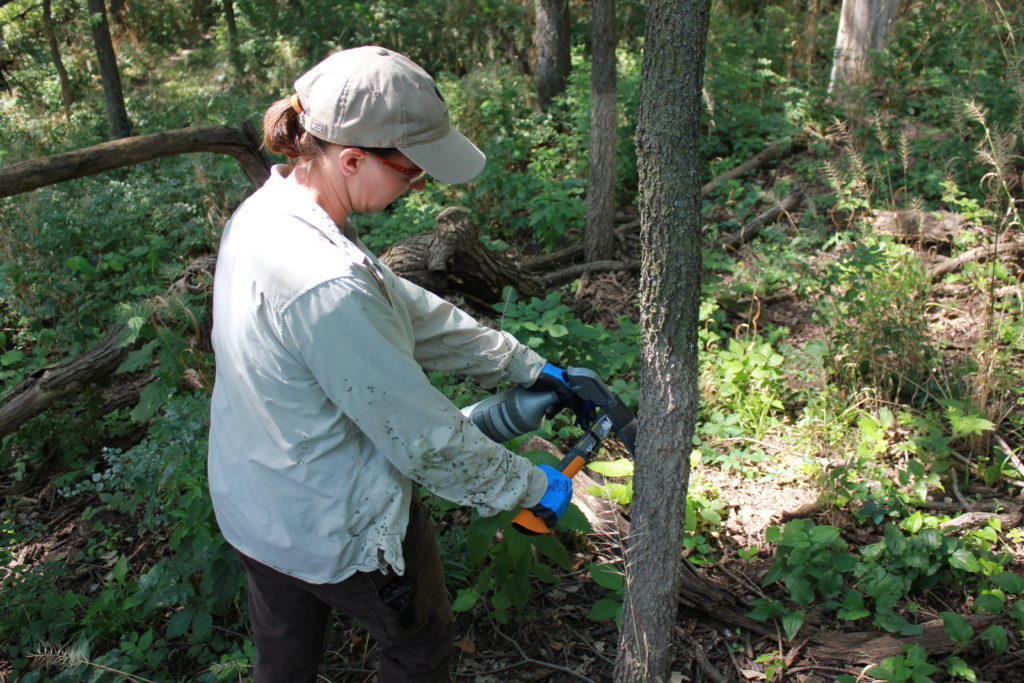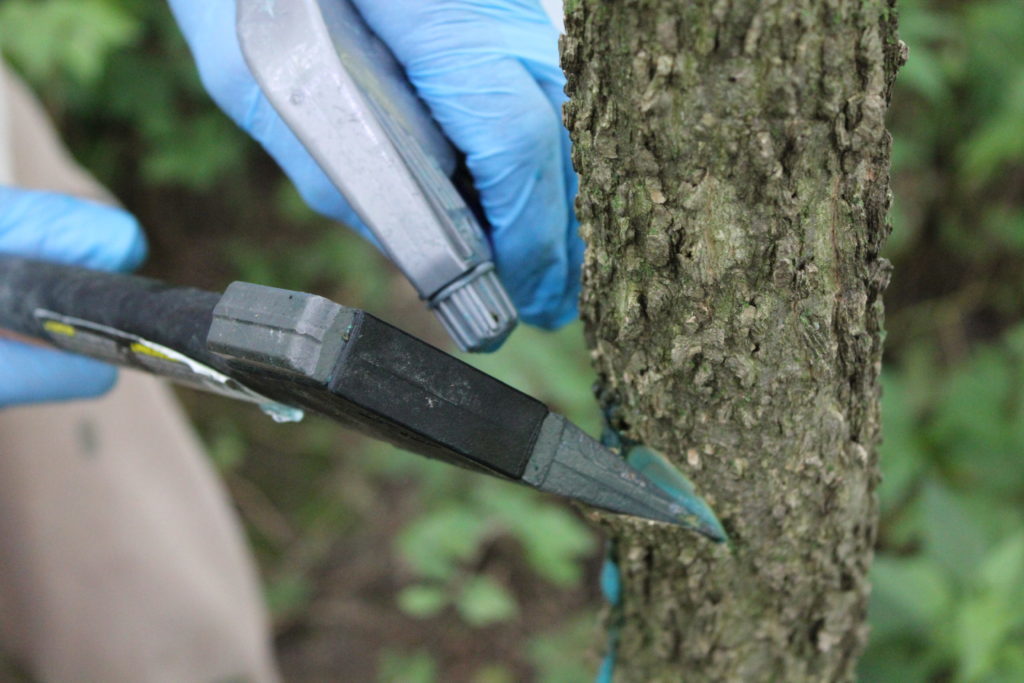Save the Oaks: Another Tool in the Toolbox
As you hike on the trails at Fontenelle Forest or Neale Woods, you may have noticed that there are some work areas in the forest that are rather dramatic, such as where we used chainsaws to remove large trees to create immediate openings in the canopy. Or, if you have the opportunity to hike after one of our prescribed burns, you’ll see the remnants of the fire on the ground. Some of our restoration tools and management actions, such as hack and squirt, result in a more subtle difference.

Why is it done?
Hack and squirt is a method of understory tree thinning and takes place in areas where over-abundant shade-tolerant trees (hackberry, elm, ironwood, and basswood) are too thick. Very little sunlight reaches the woodland floor in these areas, which prevents grasses, sedges, and wildflowers from growing. This leads to lower diversity of plants and animals.
How?
The hack and squirt method of thinning is conducted by administering several hatchet cuts around the trunk of an undesirable tree of a certain diameter (generally 8 inches or less), and then a broadleaf-specific herbicide is applied into the cut. The benefit to this method is that the chemical is applied to the target tree only, and there is less chance of transfer through the soil. It does not affect grasses, or sedges, and damage to other plants is minimal due to the specific application method. This type of treatment requires less time and labor, covers a more expansive area, and keeps the canopy from opening too quickly. The targeted trees die slowly, over weeks and months, and provides habitat as standing dead snags for different animals. For several years Indian Cave State Park, in southeast Nebraska, has been applying hack and squirt treatments with great success, in conjunction with their prescribed burn program.

What can you expect to see?
The conservation department has been conducting hack and squirt operations from about mid-May and will continue until the end of the growing season. So far this year, we have applied the hack and squirt thinning method to over 150 acres of potential oak woodland and savanna areas and ridge tops, both at Neale Woods and Fontenelle Forest. Some of our target areas are directly adjacent to a trail; however, many of our treatment areas are off trail on our ridges and upper slopes. Funding for the hack and squirt treatments are made possible by the Nebraska Game and Parks Commission and the United States Fish and Wildlife Service.
Added Benefits
While we are out hacking and squirting, we are also on the look-out for infestations of invasive plants (garlic mustard, honeysuckle, dame’s rocket). We map these areas so we can go back and treat them at the appropriate time of year. Sometimes we find surprise plants that we weren’t expecting to see. For example, we have found big bluestem grass (Andropogon gerardi) and other native prairie and savanna species popping up in some of our treatment areas. These hidden plants may have been lying dormant or have been out-competed by invasive species for years, until a prescribed fire or enough sunlight allows them to flourish. The Fontenelle Forest team anticipates more and more fun finds as we advance our restoration efforts. The excitement and anticipations of finding more native, savanna adapted plants as a direct result of our restoration efforts is thrilling, as is the knowledge that we are encourage playing an integral part in creating a more sustainable ecological community on a local and regional scale. See you on the trails.
Michelle Foss, Restoration Biologist


